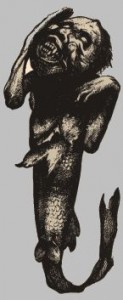One nice non-biological thing you can do with phylogenetics (unlike beers) is study the evolution of languages. If you aren’t familiar with evolutionary linguistics, it’s basically the same principles that we use to study the descent with modification of organisms but applied to words. Even though words do not evolve in a biological way, we can still apply similar phylogenetic principles by just adjusting the evolutionary models.
OK but let’s go back to my assumption (that you do speak Yamnaya). Since you are reading this blog post that I’m trying to write in English, you do speak English which is part of the linguistic family (or clade) called the Indo-European that consists of the vast majority of the European and Indian languages spoken by a good 3 billion people (as the name originally suggests- check this excellent visual phylogenetic summary). Even though it is not straightforward to see the similarities between Icelandic and Indi, evolutionary linguistics suggest that both languages have diverged from the same language based on words and grammar similarities. This language, generically called proto-Indo-European is estimated to have originated either around 9000 years ago in the Middle-East and spread across India and Europe along with agriculture (the ‘Anatolian hypothesis’). Or, a second theory postulates its origin around 5000 years ago on the northern shores of the Black Sea and its subsequent spread along with horse riding and wheeled transport (the ‘steppe hypothesis’).
Until last month, both hypotheses were lacking data to explain some crucial temporal problems: the proto-Indo-European language contains words related to wheeled vehicles which were not invented 9000 years ago therefore potentially falsifying the ‘Anatolian hypothesis’. However, DNA studies did support it with a common ancestral population to Indo-European speakers dated around 9000 years ago. Also on the DNA side, no clear evidence for population dispersion was available for supporting a later origin and faster spread of the proto-Indo-European (the ‘steppe hypothesis’).
But that was only until this month: a recent paper by Haak along with his 39 co-authors preprinted in BioRxiv provides evidence for a common ancestral population that originated in the Ukraine and spread at into northern and western Europe. This population links in space and time with the Yamnaya culture around 4000-5000 years ago suggesting that Yamnaya was close to the proto-Indo-European culture. Even though if the ‘Anatolian hypothesis’ cannot be excluded, this new paper strongly suggests that at least the European branch of the Indo-European language originated from the Yamnaya culture (see Extended Data Figure 5 p.32 and its legend p.27 of the preprint pdf for a nice visual summary).
Therefore it is likely enough that Yamnaya was the origin of most European languages and that it spread rapidly through northern and western Europe probably due to technical advancements in transport. I find evolutionary linguistic always amazing when you can state that you wrote/read a blog post in a derived Yamnaya language: English.
Author: Thomas Guillerme, guillert[at]tcd.ie
Photo credit: wikimedia commons






